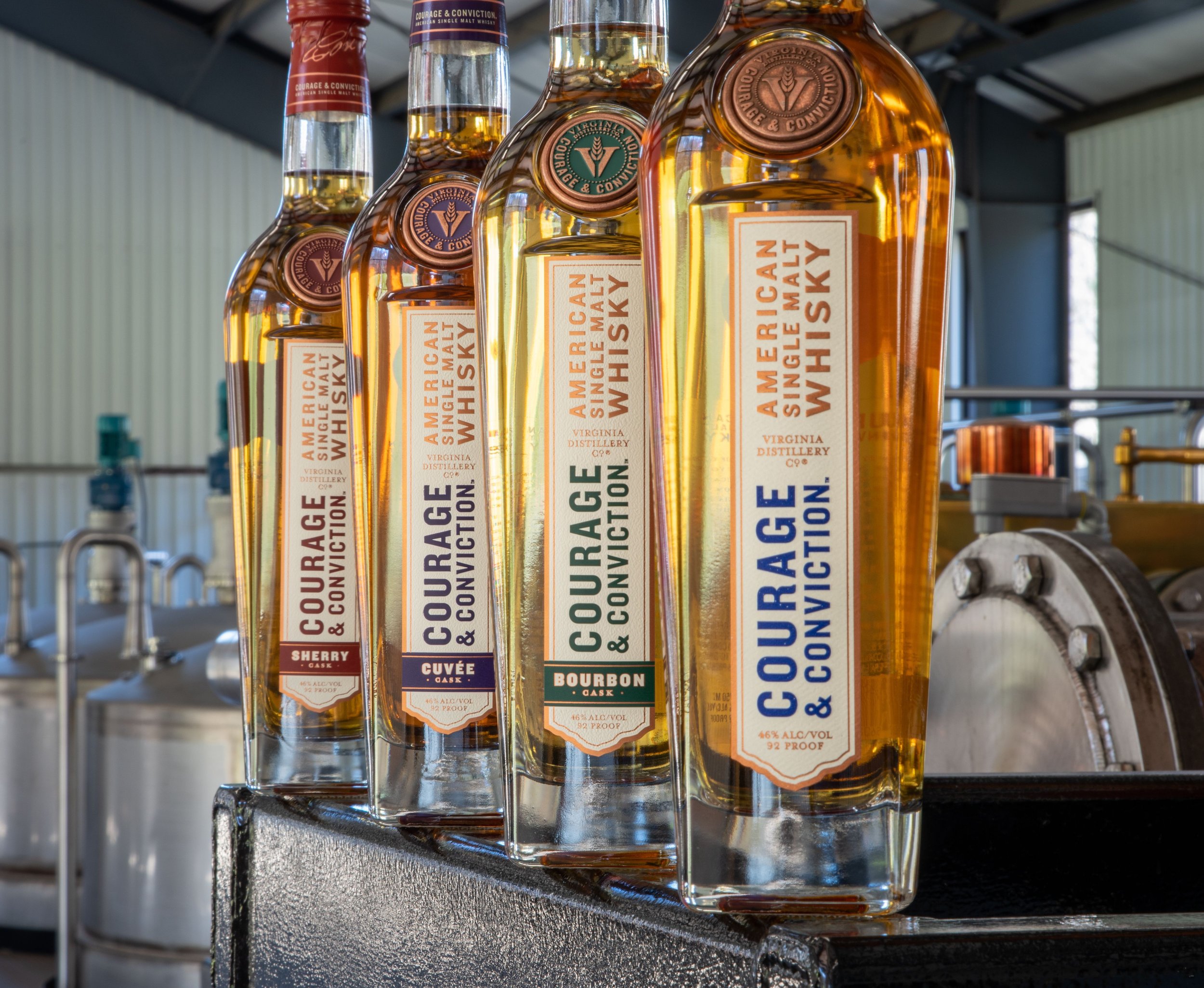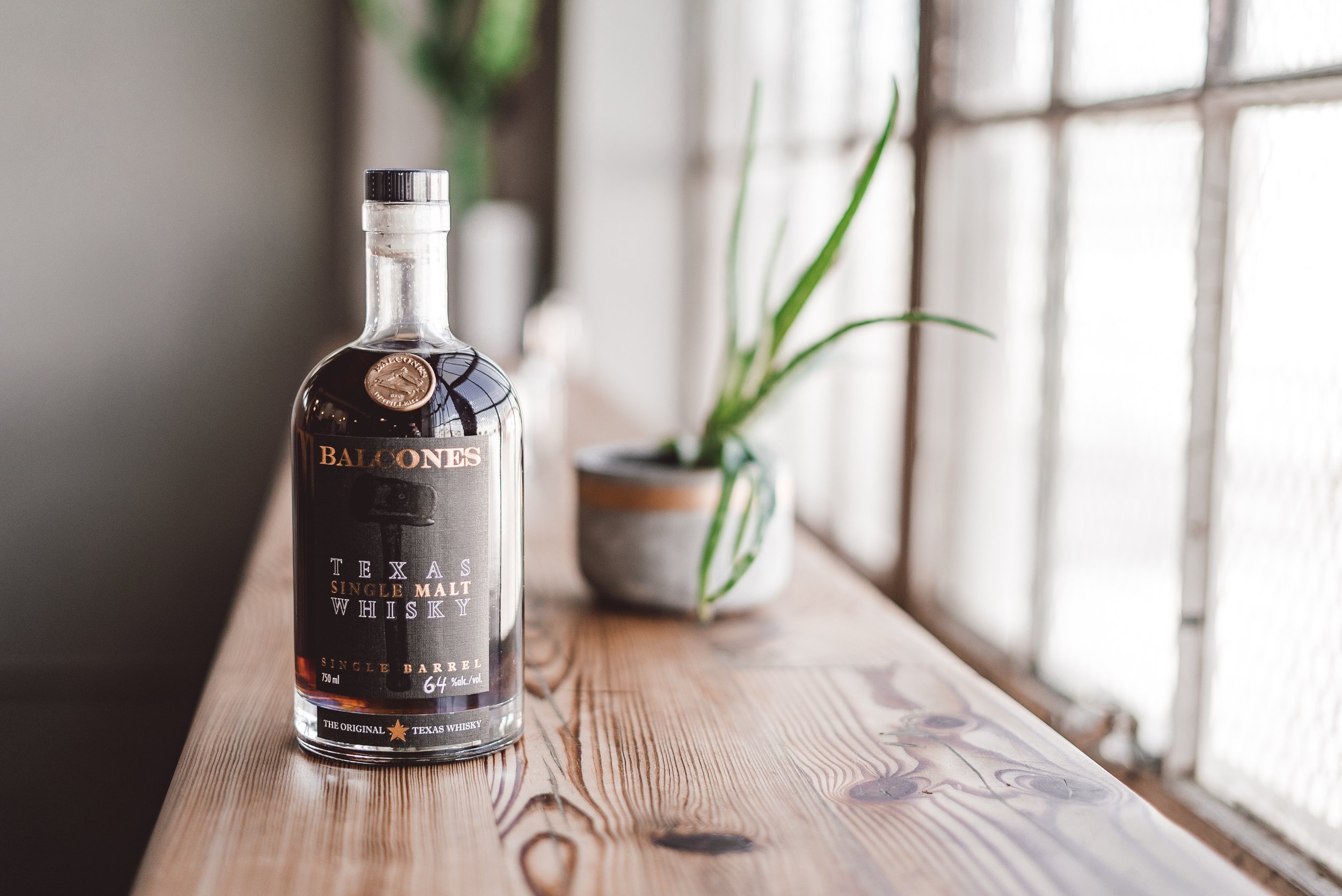Why is American Single Malt Becoming the Newest United States Official Whiskey Designation?
We’ve begun a series profiling distilleries that produce whiskies known as American Single Malts with a profile of Westland, but up until very recently, this nomenclature was one that was more a descriptive measure of what’s in a bottle than an actual, legal distinction in the U.S. Other, distinctive American whiskey styles such as Bourbon, Empire Rye, and even Tennessee Whiskey have governance and legal status through the Alcohol and Tobacco Tax and Trade Bureau (TTB) or at least state law, and as of this year, they will be joined by American Single Malt as an officially recognized American whiskey category.
“We're just really excited,” says Gareth H. Moore, CEO of Virginia Distillery Co., one of the many distilleries that collaborated toward petitioning the TTB, and one that exclusively makes single malt whiskies (including NY International Spirits Competition 2022 Double Gold winners Courage & Conviction Cuvée Cask Whisky and Courage & Conviction Sherry Cask Whisky) “Excited to finally be recognized. We’re not saying ‘we made it!’ but at least you're acknowledged by the government.”
“This ruling is huge for us,” says Matt Hofmann, Managing Director and Co-Founder of Seattle’s Westland Distillery, maker of Westland American Single Malt Whiskey, a NY International Spirits Competition 2022 Gold winner. “Formal recognition of a style of whiskey we’ve been making for more than ten years, and that’s been made in this country for at least twenty, is major validation. We’ve spread the message around the world about American Single Malt Whiskey for years, but until now we weren’t able to guarantee what the words mean. Now we can!”
In order to better understand the newly-minted American Single Malt category, and the significance of this moment in American whiskey history, we spoke with representatives from Virginia Distillery, Westland, and representatives from Texas-based Balcones Distilling, maker of Balcones Lineage, a NY International Spirits Competition 2022 Gold winner, and Seattle-based Copperworks Distilling, maker of Copperworks American Single Malt Whiskey, a NY International Spirits Competition 2022 Double Gold winner.
The Ruling on American Single Malt Whiskey
On July 29, 2022, the TTB issued a “Notice of Proposed Rulemaking” in the Federal Register, which marks the beginning of the end of a roughly 7-year campaign by American distilleries through the American Single Malt Whiskey Commission, (ASMWC,) to officially recognize the category. While the notice is now in a 60-day waiting period for public and industry commentary, for those involved in getting American Single Malt across the finish line, it is as good as done, and a long time coming.
“We have been making single malts that simultaneously represent the global tradition and are also pushing the aesthetics and philosophy around single malt forward,” says Jared Himstedt, Head Distiller at Balcones Distilling, who currently labels bottles as Texas Single Malt Whiskey. “To finally be able to be labeled as such feels more articulate and comprehensive.”
American Single Malt Requirements
Going forward, bottles that bear the words “American Single Malt” must adhere to the following parameters:
must be made from 100% malted barley
mashed, distilled and matured in one distillery
produced entirely in the U.S.
distilled to a proof not exceeding 160
matured in oak casks not exceeding 700 liters
and bottled at a minimum of 40% ABV.
While “malt whiskey” previously existed as a whiskey category, those expressions only needed to contain 51% malted barley in the mash bill.
Notably, while Bourbon can now be made anywhere in the country, it was born as a category that was specific to the conditions in Bourbon County, Kentucky. Empire Rye and Tennessee Whiskey have obvious geographical parameters, and while there are more generic specifications for spirits such as rye whiskey, corn whiskey, and so on, in essence, American Single Malt is the most broadly American whiskey style to enter the market. “It really doesn't taste like scotch. It also doesn't taste like bourbon,” says Jason Parker, Co-Founder, President, and Head Distiller of Copperworks Distilling. “So that means that there's not only a new category, but a whole new flavor concept.”
American Single Malt Whiskey Commission and a Spirit of Collaboration
Hofmann estimates that there are around 200 distilleries in the U.S. making some amount of American Single Malt whiskey, though as one of roughly 5 that are only making single malt whiskey, Westland was instrumental in leading the charge that eventually resulted in the codification of the American Single Malt category. Nine distilleries initially came together to form the American Single Malt Whiskey Commission, (ASMWC) the official petitioner, which now has nearly 100 dues-paying members.
Moore of Virginia Distillery recalls one of the original meetings of potentially like-minded, single malt distillers, before the formation of the ASMWC, which took place around 2016 during an American Craft Spirits Association convention. “I think there was a lot of trepidation on the front end in terms of okay, how are we gonna get people that are competitors with competing products…how are we going to get them to agree?”
Himstedt of Balcones concurs: “We thought we were going to spend hours debating the ins and outs of a proposed definition, but about 30 minutes later we were done and reached consensus with the 9 founding distilleries, so we spent the rest of the allocated time drinking beer and hanging out.” “It was an immensely productive and respectful discussion,” adds Hofmann. This collaborative spirit, that included distillers from all corners of the U.S., is an especially refreshing narrative given the increasingly fractious feeling among U.S. citizens, a nice touch, given the only whiskey category in this country to actually carry “American” in its name.
American Whiskey with Distinctive Terroir
One of most potentially unique elements of American Single Malt, which all of the various distillers pointed out, is that the wide range of growing conditions for the barley, and aging conditions for the spirit itself, along with relative freedom in barrel requirements, results in whiskies that are able to express a certain local personality, and even terroir.
“What most people in America don’t know is that we have one of the best barley growing climates in the world,” says Hofmann. “The Pacific Northwest, in particular, is actually a better climate for growing barley than Scotland is! So when people look at whiskey in America, they finally have the full picture of what we can do authentically, if you believe—as we do—that whiskey should be connected to agriculture.”
“What we're going to be seeing now will be an expression of whiskey that is treating grain more like grapes,” adds Parker, who notably labels bottles with harvest vintages. “People actually get to the taste the differences in the local farms (that provide the barley.)”
“When you look at the U.S., there's a huge range of climates,” offers Moore. “When you think about the different ASMWC members and their conditions, Denver (Stranahan’s) is cold and dry. The Pacific Northwest is cool and damp like Scotland. Texas is hot and dry. Virginia is hot and humid in the summer, cold and dry in the winter. And that does really different things (not only with barley) but with the wood.”
The Future of American Single Malts
Given the 7-year duration in getting the category recognized, there was a lot of head start by the various distilleries in educating interested consumers on the “what is” of American Single Malt Whiskey, but consensus among the distilleries is that the biggest next step is about shelf and menu space as a point of distinction.
“There is a lot of work still to be done even after ratification,” says Himstedt, “but we know it will be the beginning of dedicated ASM space in liquor stores and on bar menus across the country.”
“We would get stuck in that ‘other’ section, or sprinkled around the store” says Moore, “and it can be hard to find things in the ‘other’ or ‘miscellaneous’ category. And that’s not terribly attractive, right? You don’t have a bunch of people who are really into ‘miscellaneous’ whiskies. You hear people say Bourbon drinker, or Scotch drinker, or I'm big into rye. So we're hoping that we get some big American Single Malt folks now, that find it doesn't sound crazy to say that.”
Parker adds, “We really do believe that ‘the rising tide lifts all boats.’ We also refer to ourselves as ‘coopetition.’ We know that we're ultimately going to be in competition, but there is so much upside (to this collaboration.) It'll be probably the next generation that actually starts having to steal shelf space from each other, but right now, the more we get our neighbors to sit beside us on the shelf, the better.”





